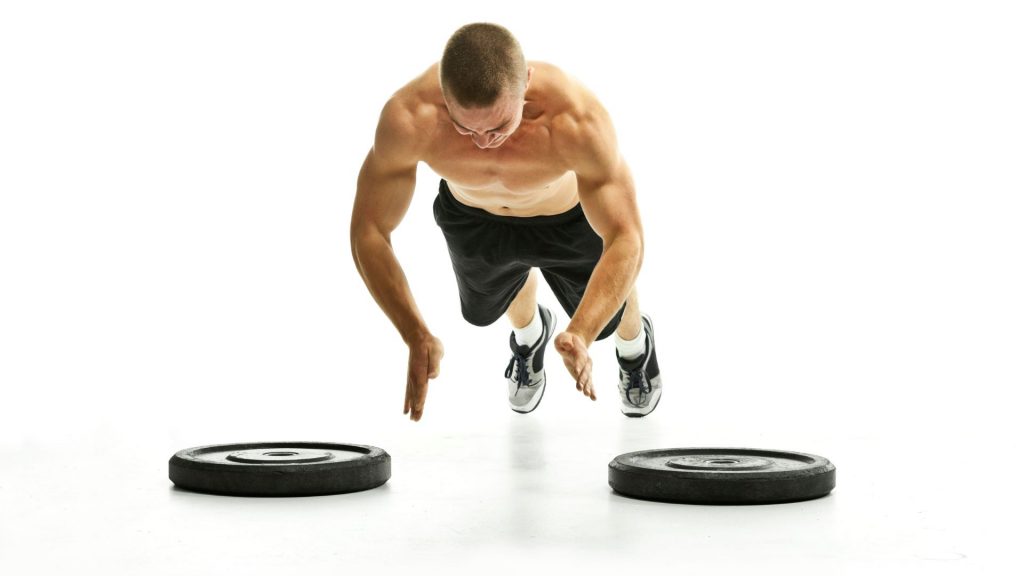Plyometrics, also known as plyos, is an integral part of physical fitness training. It is a type of exercise that uses quick, powerful movements to increase muscular power and strength. Plyometrics is designed to improve an athlete’s speed, agility, and coordination while decreasing the risk of injury. Incorporating plyometrics into their routine can benefit those looking to take their workout routine up a notch or two.
Plyometric exercises are usually performed in sets involving short bursts of strenuous activity followed by a rest period between each group. Examples include jumping jacks, squat jumps, burpees, and mountain climbers.
These exercises require explosive movement from the user, increasing the intensity and focusing heavily on developing power rather than overall endurance or strength.
Benefits of Plyometrics

Plyometrics is a form of exercise that has recently gained popularity in the fitness industry. The practices are intended to help improve muscular strength and power by stimulating rapid, explosive movements. Plyometric activities use short bursts of energy to stimulate muscles and create quick, decisive actions. For those looking for an effective way to get fit, plyometrics can provide numerous benefits.
This exercise can help you build muscle faster and increase your agility, speed, and overall strength.
It also helps with coordination, balance, and body control while enhancing your ability to jump higher or run faster. Plyometrics can also be helpful for injury prevention as it helps the body learn how to quickly absorb force from different directions without causing harm.
How to Incorporate Plyometrics

Plyometrics, also known as jump training, is a form of exercise used by athletes, coaches, and fitness professionals to increase power and explosiveness.
Defined as the combination of strength and speed movements with short recovery periods between them, plyometrics have become an integral part of any athlete’s conditioning regimen. With that in mind, here are some tips on incorporating plyometrics into your workout routine.
First, start out slowly by doing low-intensity drills such as box jumps or hopping exercises before progressing to more intense plyometric exercises like jump squats and tuck jumps. Be sure to warm up your muscles before the session for at least 10 minutes to introduce the risk of injury.
Working with a Professional Trainer

Working with a Professional Trainer is essential in getting the most out of any fitness routine. The right trainer can provide the expertise and guidance necessary to help you reach your goals and stay safe.
Plyometrics is an exercise system that combines elements of strength training, endurance, and agility. It has become increasingly popular among fitness enthusiasts looking to get the most out of their workout. Learning to properly use plyometrics requires a knowledgeable professional to show you the proper form and technique for each exercise.
A good trainer can provide tailored advice for your individual needs, such as which exercises are best suited for building strength or improving agility. They will also be able to explain how plyometrics works, what results in it can produce, and how often it should be included in your regular workout routine.
Common Mistakes

Plyometrics is a popular form of workout that has been gaining traction among athletes, amateur fitness enthusiasts, and even physical therapy patients. While it offers numerous benefits, there are some common mistakes people make when incorporating plyometrics into their routine.
From not understanding proper form to neglecting to warm up and cool down, here’s what you need to know about the most common mistakes associated with plyometrics.
One mistake many beginners make regarding plyometric exercises is attempting them without proper form or technique. Movements like box jumps and hopping drills require coordination and balance to be safely executed.
Neglecting proper technique can cause injury or muscle strain due to incorrect force application. Similarly, failing to warm up before beginning a session can increase the risk of injuries from sudden movements or straining cold muscles.
Modifying the Intensity

Plyometrics, also known as jump training, is a form of exercise that utilizes explosive movements to improve physical performance.
Whether you are a professional athlete or just looking to get fit, plyometric exercises can help you improve your fitness level and reach your goals. But before diving into this high-intensity exercise regimen, it’s essential to understand how to modify the intensity for your needs.
Modifying the intensity of plyometric exercises allows everyone, from beginner athletes to advanced trainers, to safely participate in the workout program without risking injury or overtraining.
By adjusting the number of repetitions and sets and changing the length of rest periods between sets, participants can tailor their workouts according to their individual needs and ability levels.
Conclusion

The conclusion of this article is that plyometrics can be an effective way to improve your overall physical fitness. Plyometrics are dynamic exercises that involve multiple movements and require force, power, and speed. They offer a range of benefits, including improved muscular strength, coordination, balance, and cardiovascular endurance. Plyometrics can be used by athletes to enhance their performance in a variety of sports and activities.
Furthermore, plyometrics benefit people just starting out with exercise or looking to boost their current performance. It is important to remember that proper form is vital when doing plyometric exercises correctly – always consult with a doctor or certified trainer before beginning any new exercise routine. With the proper guidance and dedication, you’ll find that plyometric training can help you achieve your fitness goals faster than ever!

